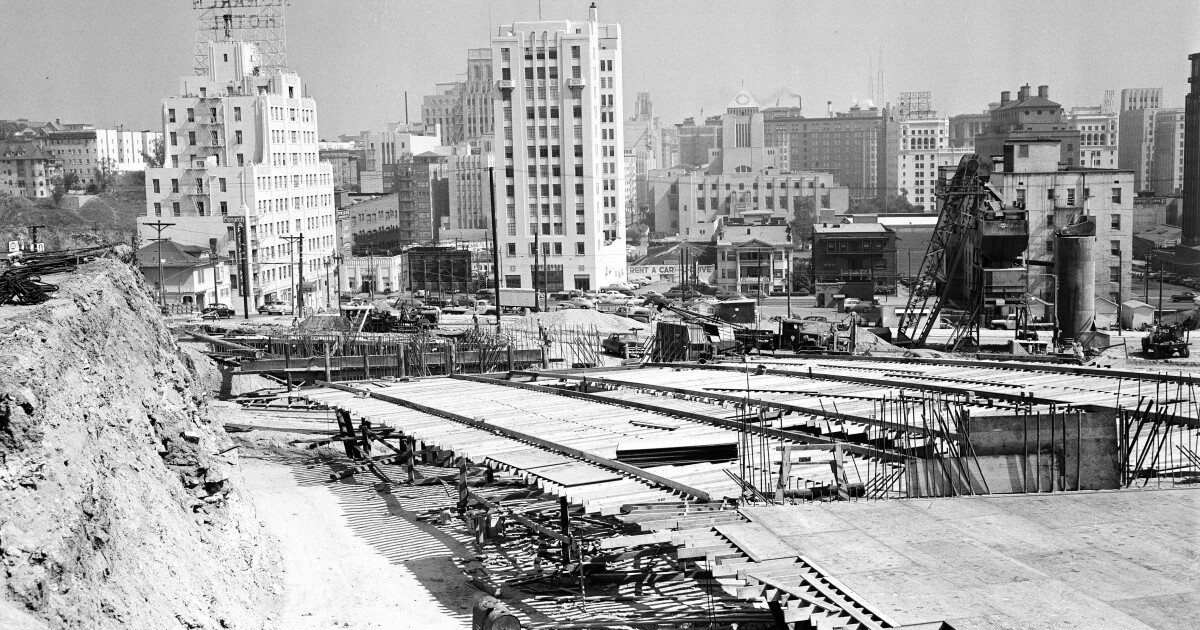
When President Eisenhower created the U.S. Interstate Freeway Machine in 1956, transportation planners tore during the country’s city spaces with freeways that, thru goal and indifference, carved up Black communities. Total, throughout the first 20 years of freeway development by myself, greater than 1 million other people had misplaced their houses national.
In Nashville, civic officers added a curve to Interstate 40 in 1967 to steer clear of a white neighborhood in want of flattening loads of houses and companies in a outstanding Black group. Freeway planners in Birmingham, Ala., did the similar factor when routing Interstate 59.
After Ku Klux Klan leaders and others destroyed the Greenwood group of Tulsa, Okla., a century in the past in the country’s deadliest race bloodbath, citizens temporarily rebuilt the industrial space famend as “Black Wall Side road.” However the group used to be demolished for excellent when Interstate 244 and U.S. 75 have been constructed thru its middle in 1971.
At a couple of issues, the east-west trail of Interstate 10 thru Los Angeles County wolfed up distinct Black and Latino neighborhoods.
In Boyle Heights, freeways together with the 135-acre East Los Angeles interchange — one of the vital busiest within the nation, the place Interstates 5 and 10, U.S. 101 and State Direction 60 all meet — driven out a minimum of 10,000 other people in what used to be a Mexican and multiethnic neighborhood within the Nineteen Fifties and ‘60s. In South Los Angeles, a well-off Black space known as Sugar Hill used to be bulldozed. Then, to construct Interstate 10’s terminus via the Pacific Ocean in Santa Monica, engineers leveled the Pico group, forcing the town’s wallet of Black, Mexican and Eastern citizens to go away.
All this befell now not most effective as a result of explicitly racist decision-making, but in addition as a result of how race influenced the country’s housing and financial coverage on the time, stated Eric Avila, a historical past and Chicano research professor at UCLA and creator of a couple of books on city freeways.
The freeway program labored in live performance with recent city renewal efforts, which aimed to eliminate housing and companies that have been deemed substandard and exchange them with new building and simple travel routes for newly minted suburbanites.
However the ones new suburban citizens have been virtually completely white. Discriminatory actual property practices and low-interest loans made to be had most effective to white citizens blocked others from transferring to new subdivisions. Against this, freeway developers frequently defended taking assets in Black neighborhoods via arguing the land used to be most cost-effective there — a proven fact that trusted government-backed loan redlining insurance policies that discouraged funding in Black spaces.
“Black neighborhoods have been thought to be to be blight. They have been thought to be to be slums,” Avila stated. “The dominant point of view of the time used to be to eliminate blight, to do away with slums. Those neighborhoods have been merely burnt up with none efforts to remediate the wear that used to be completed.”
One more reason highways went thru Black and Latino neighborhoods used to be political energy. As popular backlash to highway development grew within the overdue Nineteen Sixties, white communities frequently have been ready to dam the roadways or get them rerouted.
Throughout Southern California, freeways that paved over Black and Latino neighborhoods — equivalent to Interstates 5, 10 and 110 — have been finished, whilst the ones proposed to move whiter, extra prosperous spaces in Reseda, Laurel Canyon and Beverly Hills have been stopped.

